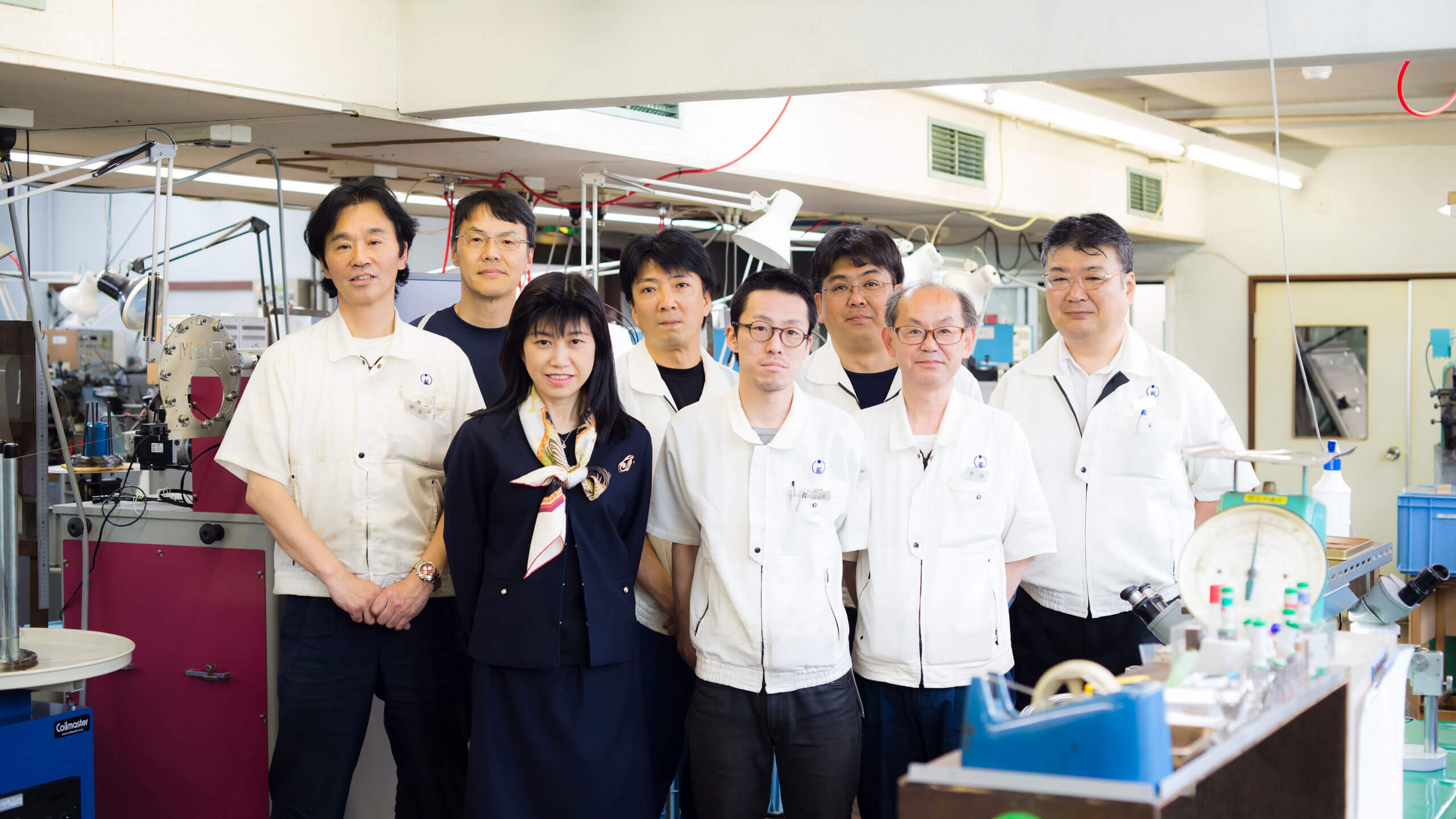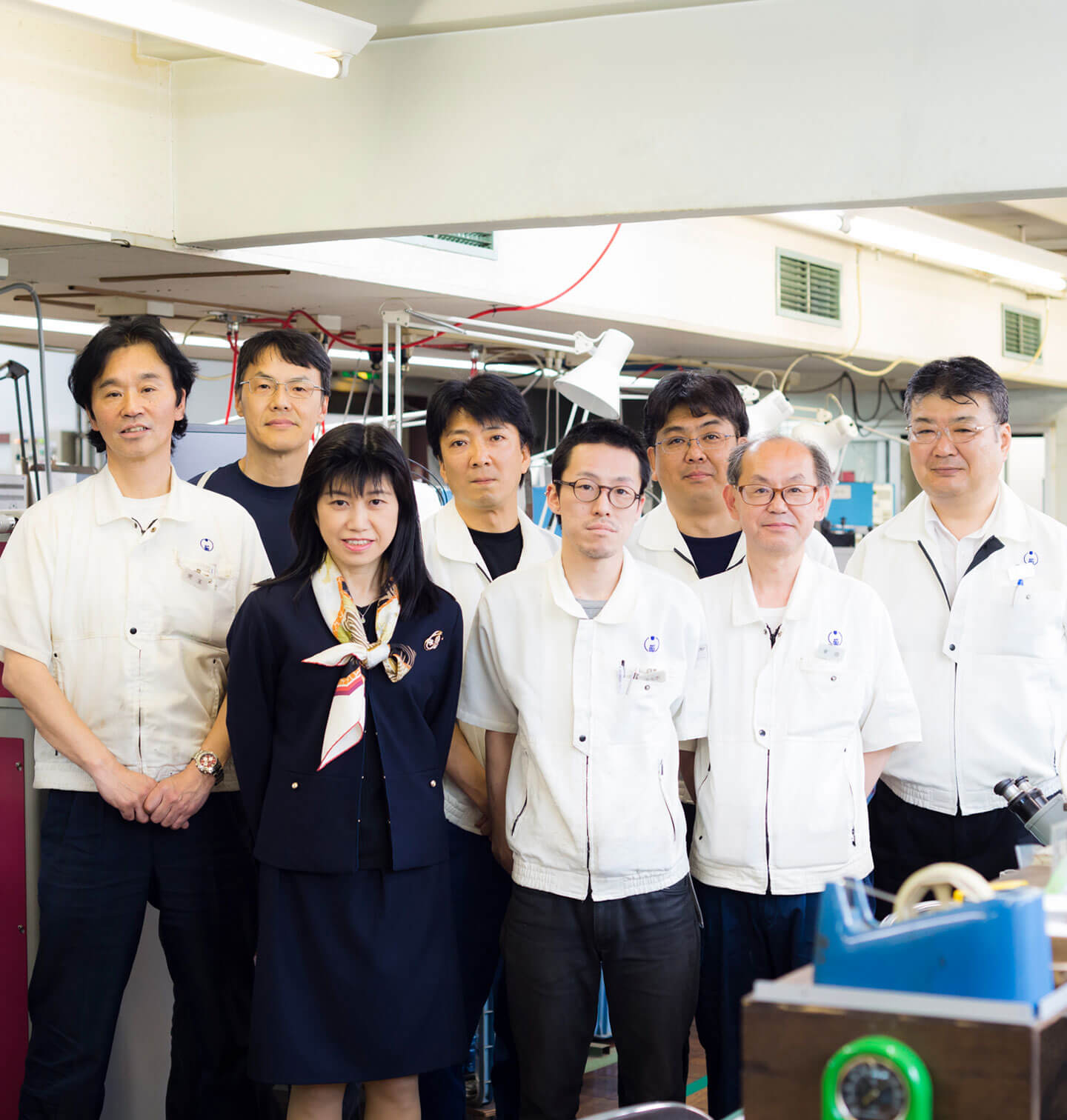INDUSTRIAL JP
idstr.jp open shareOctober 23, 2016
AT-1
komatsu spring idstr.
interview
We want to challenge new things and lead manuacturing in this difficult situation in Japan.
// komatsu spring idstr. interview
Komatsu Spring is located a short distance from Kamata Station in the Ota Ward. In the past, the factory has even had the honor of being visited by the Emperor. We talked to the female president of the company about high tech manufacturing in Japan.
komatsu bane
ID-1
komatsu spring idstr.
dj tasaka
Springs are even used in catheters.
What are some fields the springs produced by Komatsu Spring are used in?
Komatsu: Komatsu Spring’s customers work in a wide variety of fields, but makers of electronic components make up a wide segment of our customer base. Because of a spring’s capacity to rebound after being pushed, they are often used in switches and connector components. Switches are used in gaming devices, interiors of cars, office equipment, communications equipment, household appliances and other types of products you see everyday.
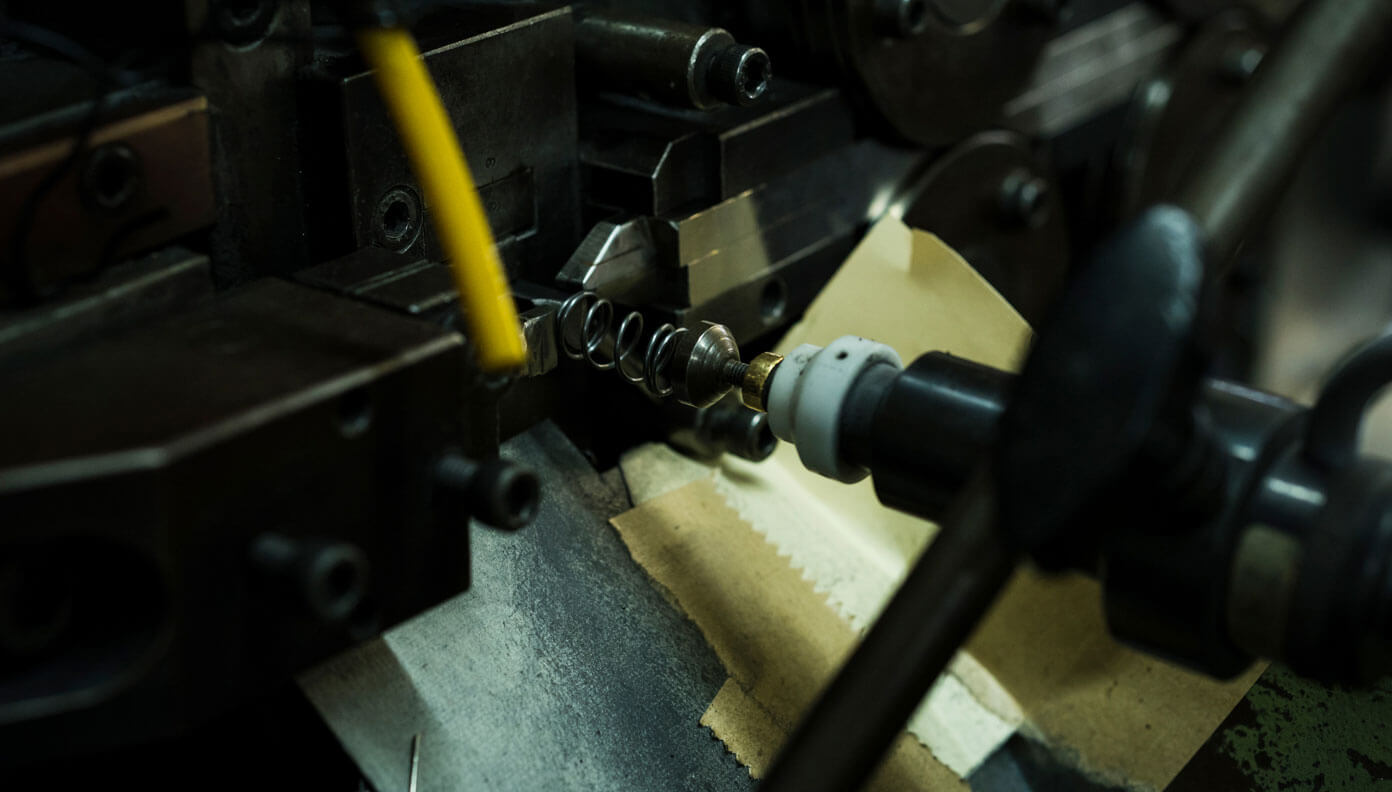
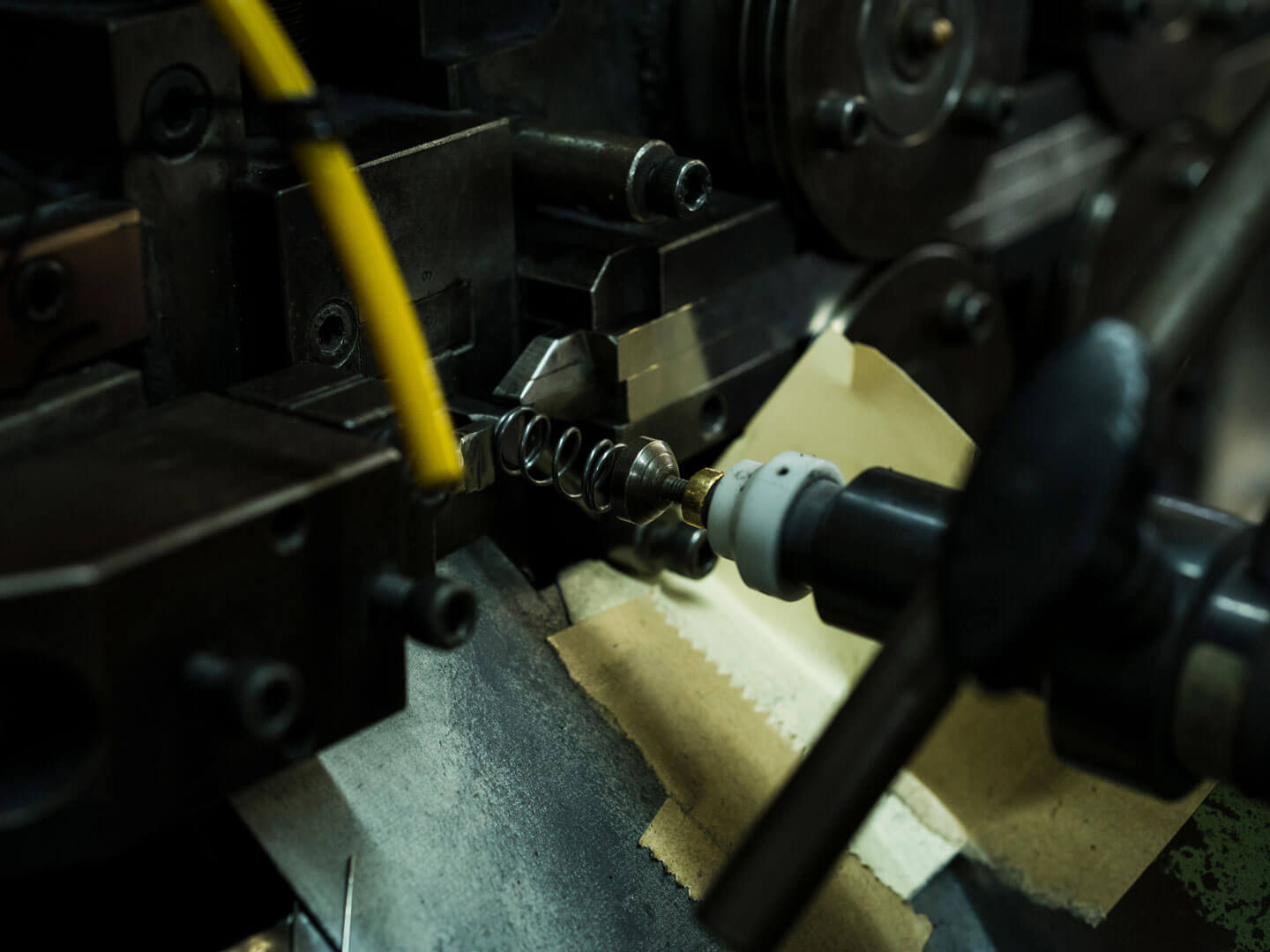
Is it true that they are also used in memory cards?
Komatsu: That’s true. Memory cards contain compression springs. They are even used in the manufacturing of medical equipment.
Medical equipment? I never really had the impression that springs were used that much in the medical field. Can you give us some examples?
Komatsu: Guide wires are one example that our company is involved with. A catheter is a medical device that is inserted into blood vessels in order to carry out tests or administer medication. Before a catheter can be used, a spring is inserted into the vessel to act as a guide for the catheter. After that other medical equipment can be used.
A spring actually enters the body?
Komatsu: That’s right. This is a guide wire, and the black object next to it is the lead of a pencil. Please take a look with the magnifying glass.
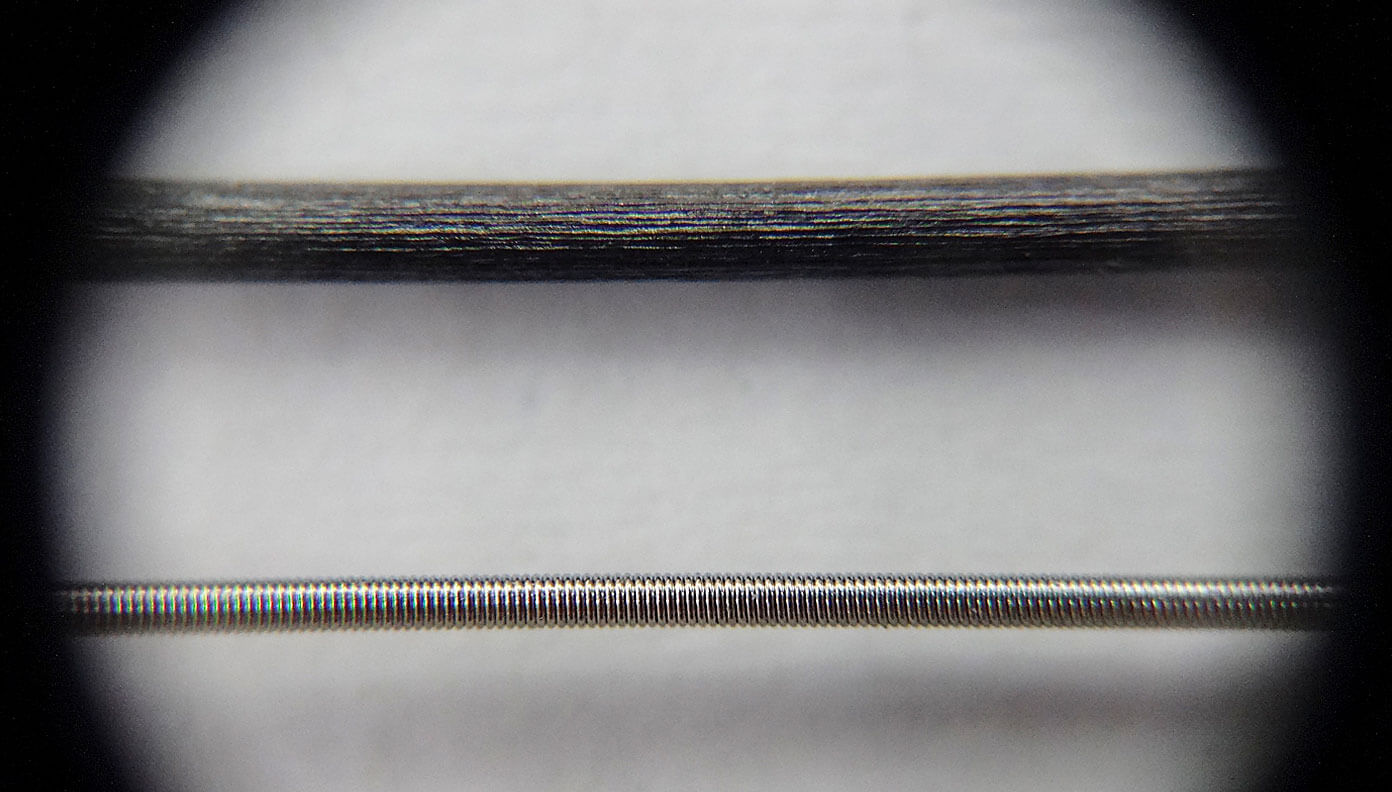
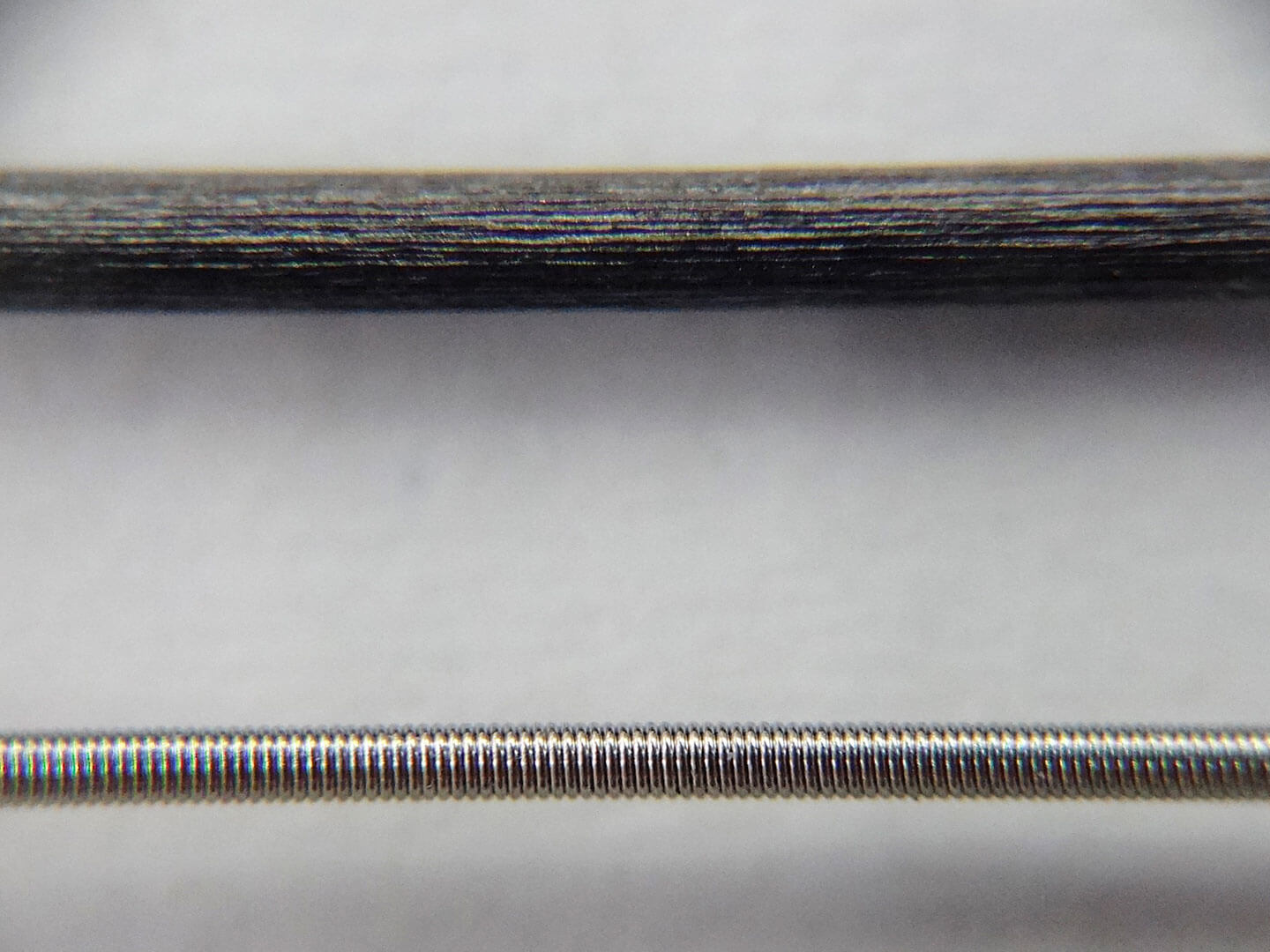
I see. It’s even thinner than the lead of a pencil. But this one here is so small I’m having a hard time imagining what it could possibly be used for.
Komatsu: These are actually used in contact probes, which are used to test the electric current of semiconductors and circuit boards. The probe contains a spring, a mobile plunger, and a pipe component, and when pressure is applied the spring acts as a cushion.
The spring is so small, I couldn’t tell what it was just looking at it with the naked eye. I almost thought it was some kind of insect egg when I first saw it. I had to use the magnifying glass to even be able to see that it was, in fact, a spring.
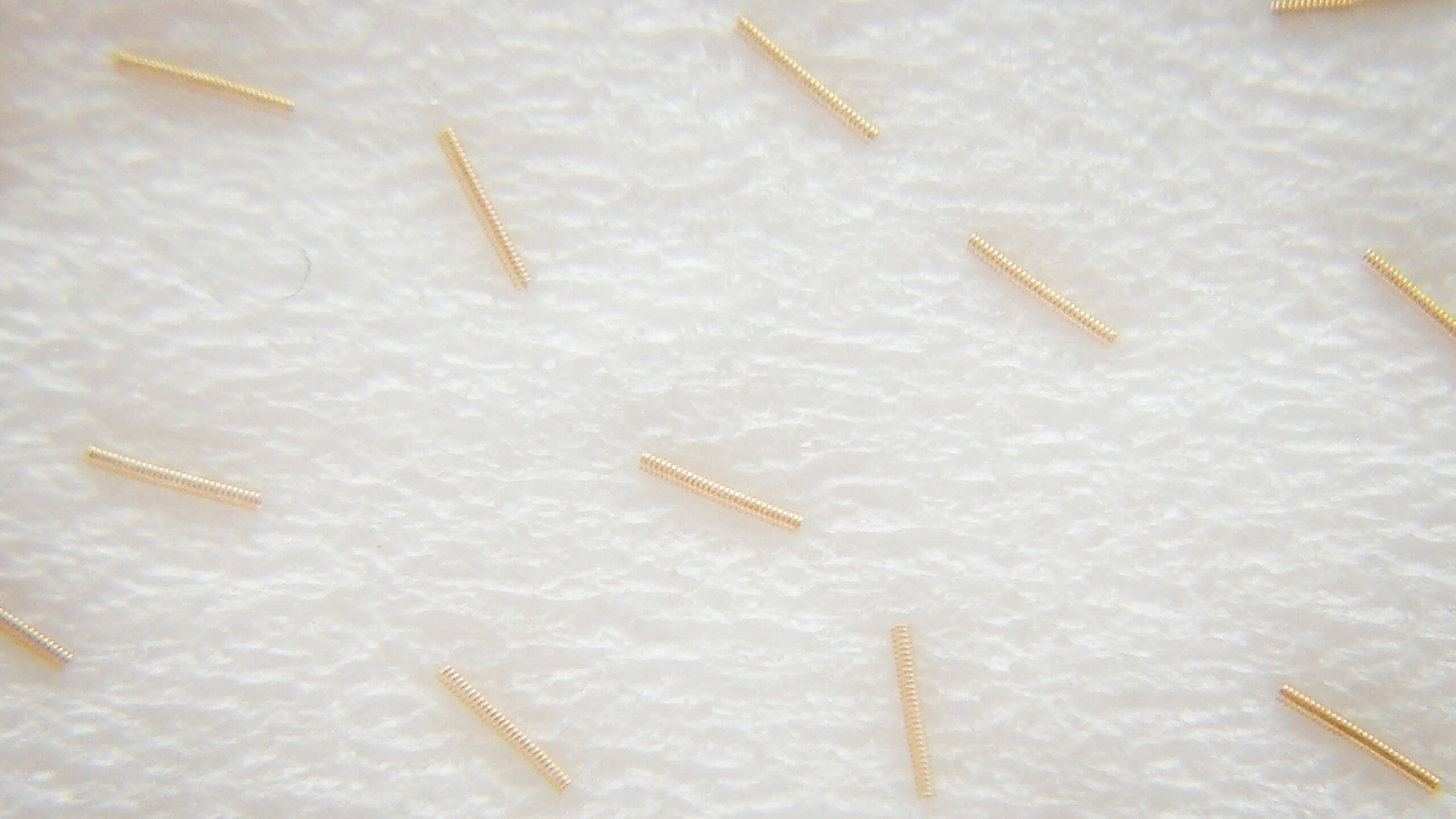
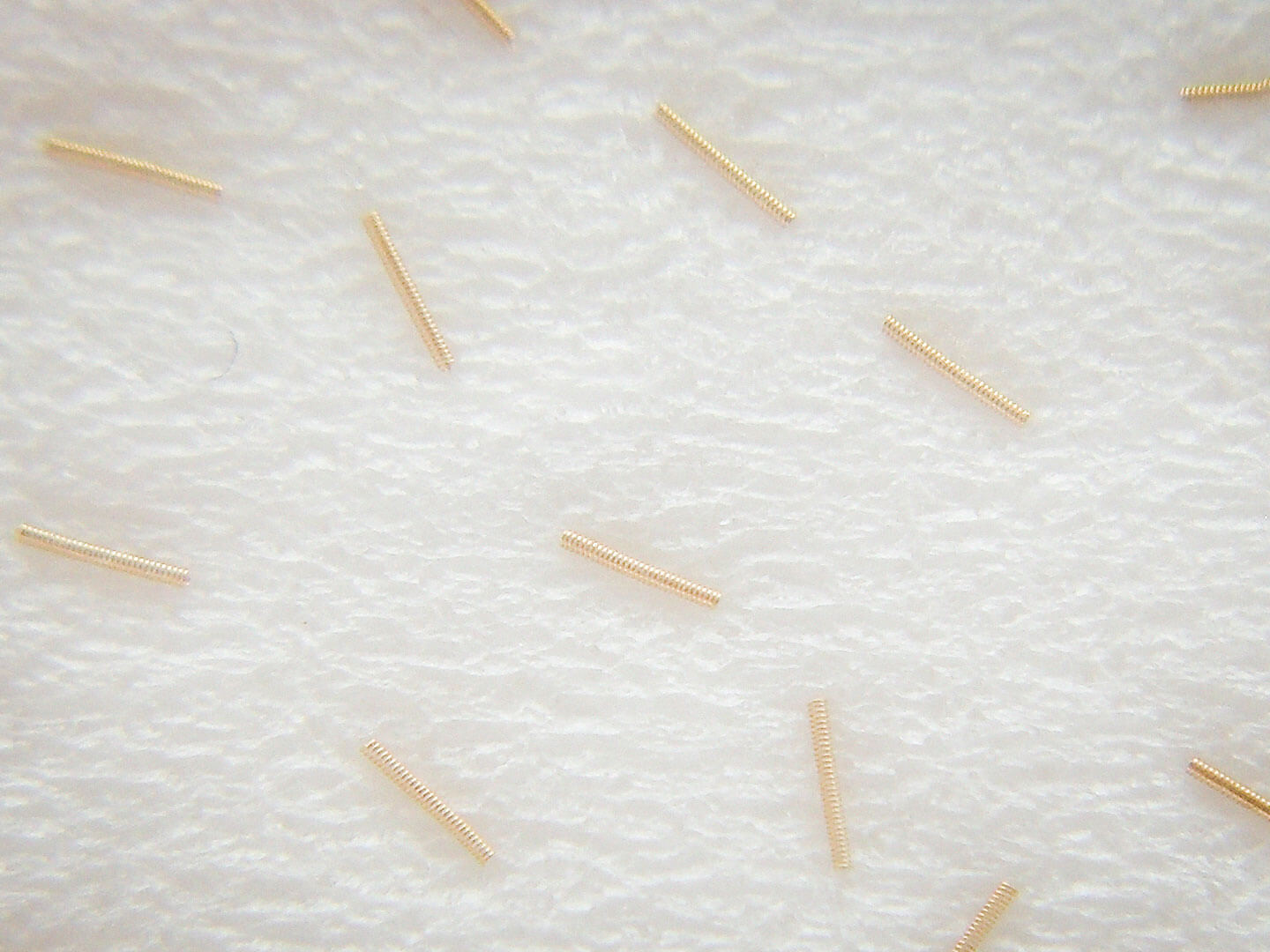
You can purchase very specialized machinery to make extremely small springs. But even with the machinery it is not a simple process.
Making something this intricate definitely seems difficult.
Komatsu: It’s simple really. You can purchase very specialized machinery to make extremely small springs. But even with the machinery, it is not a simple process to make these springs. It’s only after the engineers get some experience and practice that they are able to make a quality product.
Of course there are cases where larger springs can be difficult to make as well. But the thin ones are generally always more difficult. If the material used to make the spring itself is thin, the tools used to make them must also be small. A groove has to be carved by hand to match the size of the material, if the groove is not well made then naturally the final product will not come out well. While looking through a microscope, a saw-like tool is used to carve out the correct shape. In order to ensure a high level of precision, we make these tools at our own factory.


These are made using microscopes? That definitely seems like it would require skill.
Komatsu: It certainly requires experience. But not only that, it also requires a degree of patience and sensitivity.
There’s definitely some artisanship to it. How long does it generally take to learn to use this machinery?
Komatsu: It depends on the individual, but probably around 5 years. It generally takes around 10 years to truly master the process. This is Mr. Sasaki. It’s his 8th year here.
It doesn’t generally go the way I want the first time. I make adjustments until it starts looking closer to the drawing. It’s rigorous training (laughs).
What part of the spring manufacturing process do you think is most difficult? Is there a difference in the types of challenges encountered when making large springs and small ones?
Sasaki: I’m still just in the beginning stages of learning how to make the smaller springs well, but as for what makes them different? First of all, the ratio of defective products produced is completely different. A lot of mistakes are made in the production of the smaller springs. A high rate of defective products implies that there must be mistakes somewhere in the production process but it can be difficult to determine where. I’ve become fairly skilled at making the larger springs, so if a problem occurs there, I generally know why, but when it comes to the smaller ones, I have no idea. Even if you know how the machinery works, it doesn’t always go well.
How do you investigate the cause of these problems?
Sasaki: I have to start over from the beginning and try again. Sometimes the result is better than the first time, sometimes it’s worse. The only thing I can do is try. It doesn’t generally go the way I want the first time. I make adjustments until it starts looking closer to the drawing. It’s rigorous training (laughs).
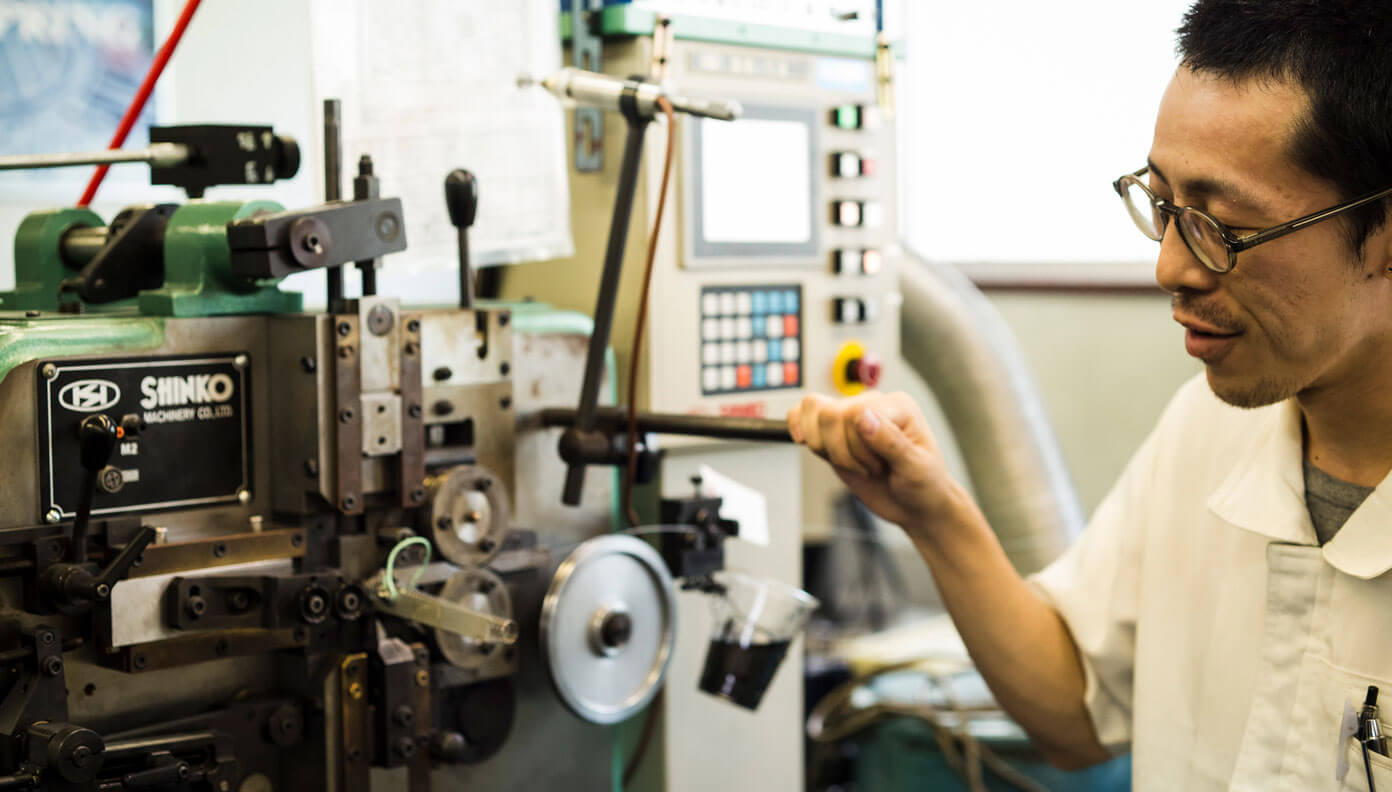

So the more skilled you become, the faster this process gets?
Sasaki: If there is a mistake, its very important to pursue the reason for that mistake. If you do that, you will be able to finish products more quickly, and that’s when you feel you’ve really improved.
Komatsu: Recently, we’ve been able to use machines to create products with very complex shapes using numerical control, but sometimes, these products can’t be made with machines and we have to manufacture them by hand.
The manufacturing is done by hand? One by one?
Komatsu: In the past we did all of the bending process by hand. Now most of the complicated shapes are made by machines, improving the efficiency of the process. This is Mr.Hanawa, who is in charge of manufacture by hand.
Hanawa: The product I’m dealing with right now has a very particular and difficult interior threading. I’m currently working on the first step in a four step process. I have to make adjustments to the pressure being used to bend the spring as I go.
A four step process. How many are you making?
Hanawa: This time I’m making 500. If it’s just a prototype, I might only make a few, but sometimes orders come in bulk and we have to make tens of thousands.
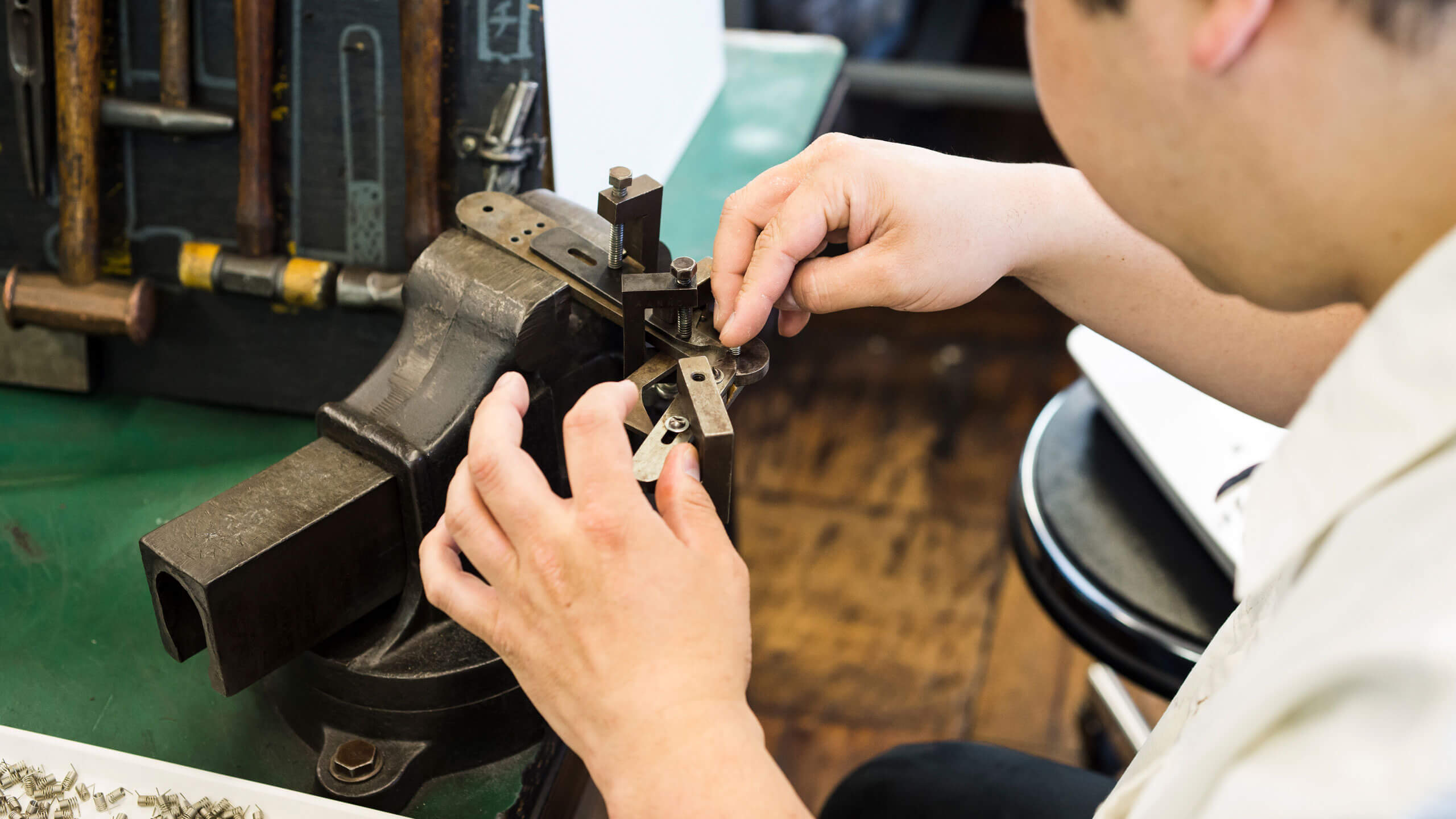
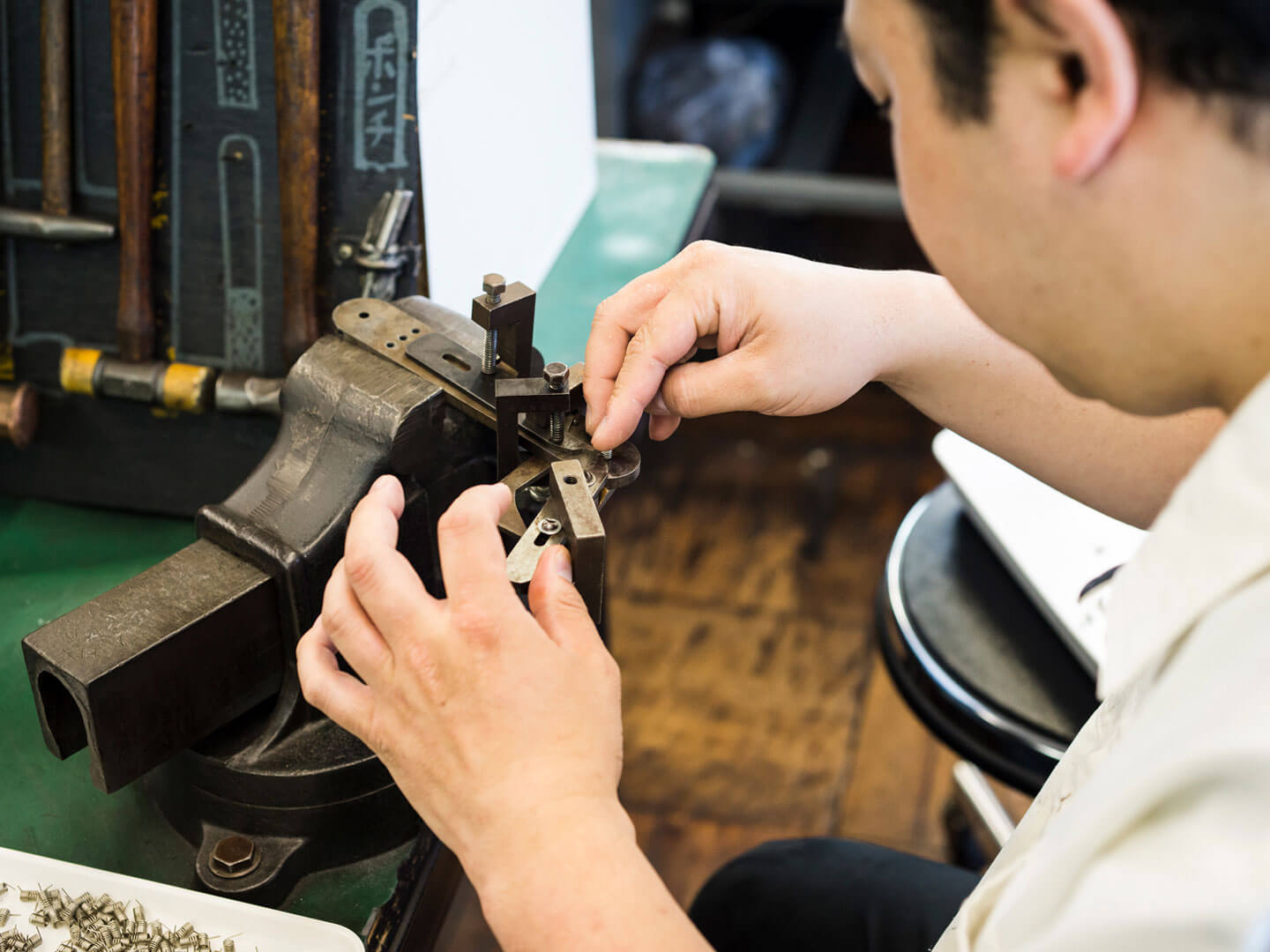
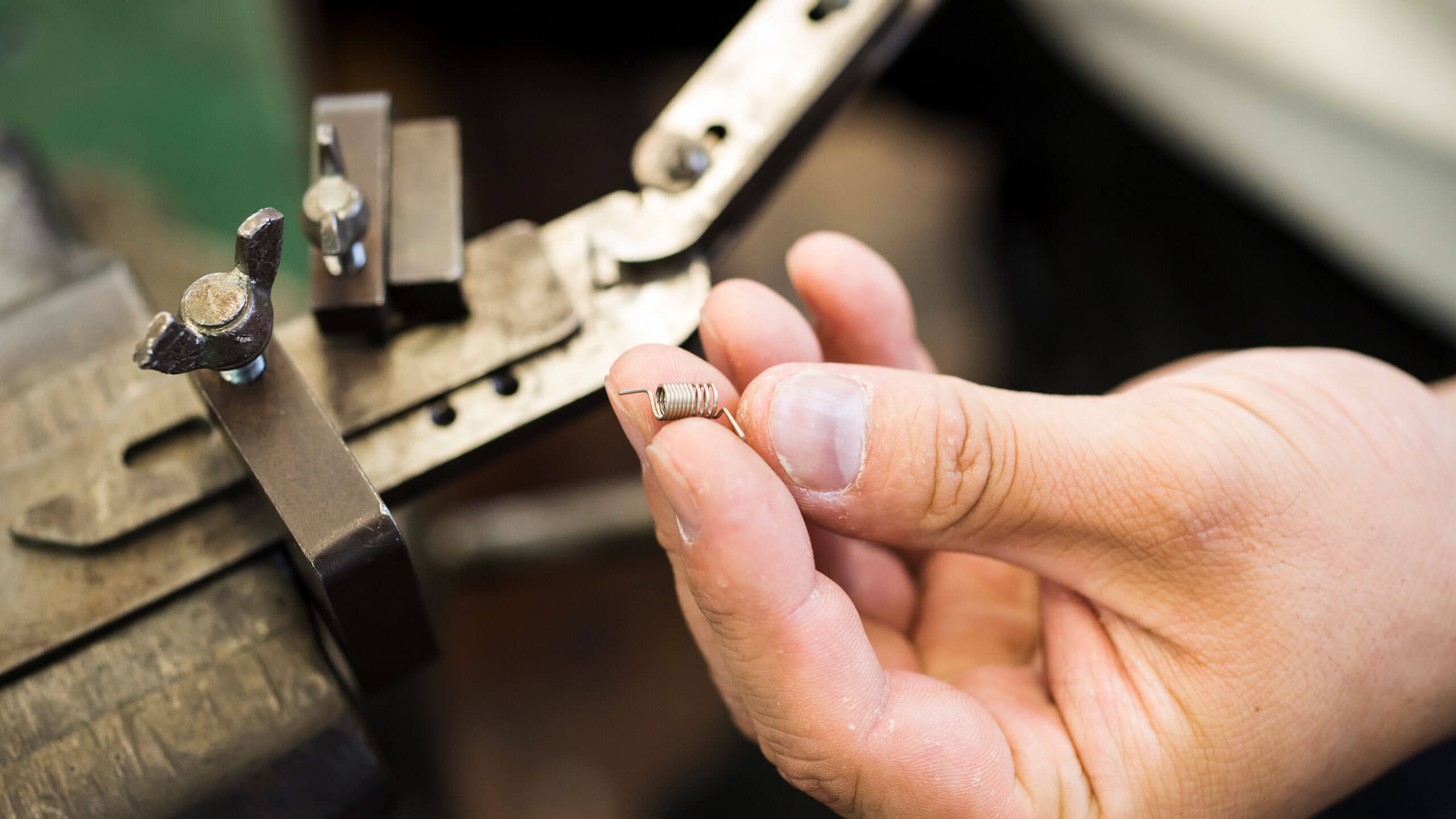

Even if we introduce the machinery for the manufacture of small springs to factories abroad, it will not be easy to make these springs well.
Improving the accuracy of tools to perform at the micro-level, making clever use of the settings of the machinery, and manufacturing by hand. It seems there’s a lot of this sort of artisanship at work here. This must be a strength of this factory in the domestic market.
Komatsu: Recently, many manufacturers in Japan are building factories abroad. These products are often sourced from abroad, and it is not easy to export springs from Japan. This is also the reason why selling large quantities of springs in the domestic market has become very difficult. We have to think about how to survive as a company in the current market. On the other hand we also have a factory in Indonesia but there is a large technological gap. Even if we introduce the machinery for the manufacture of small springs, it will not be easy to make these springs well. From this point on, acquiring the skills and technology necessary to produce even the most challenging products, is one of the greatest benefits of domestic production.
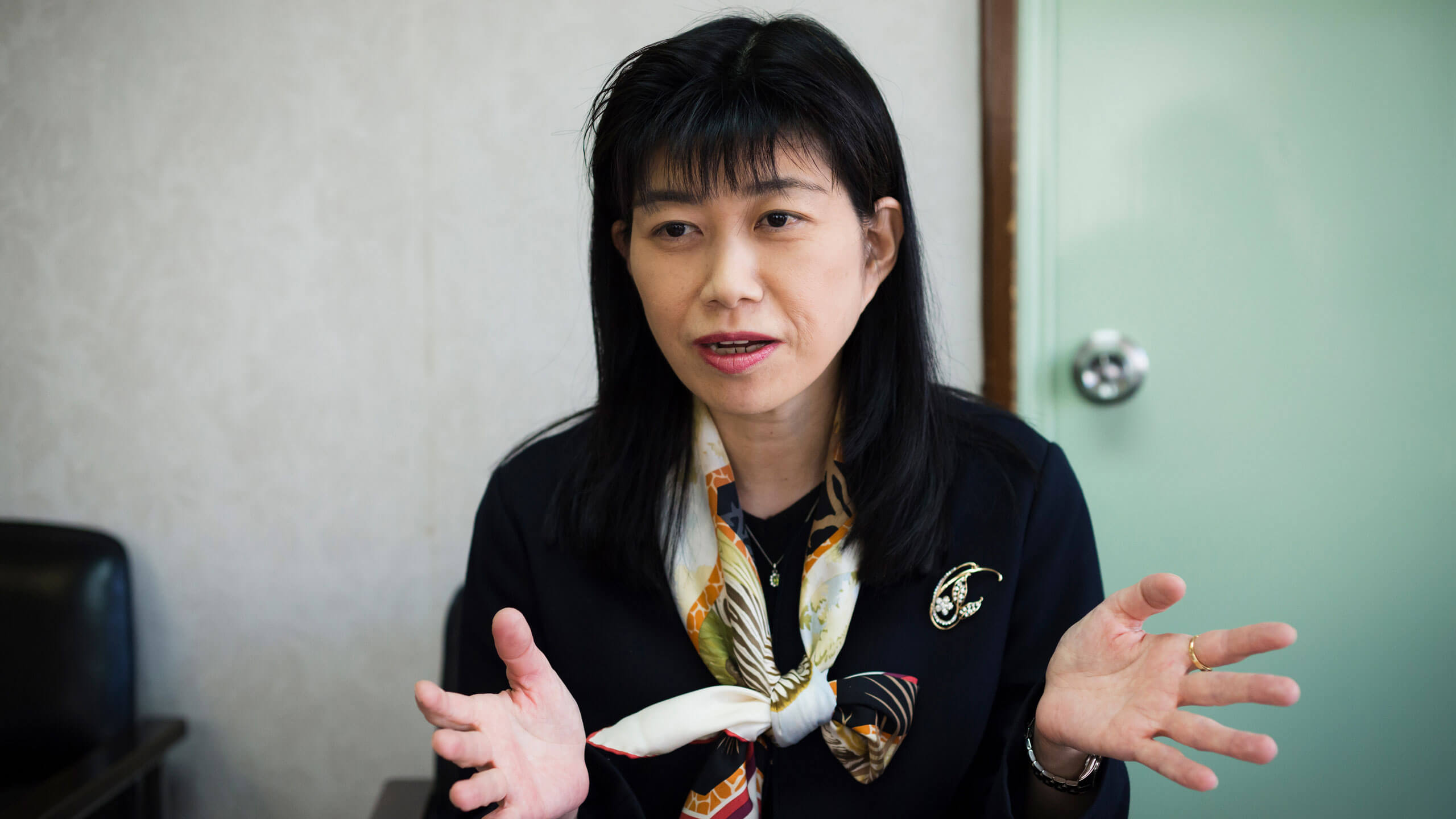
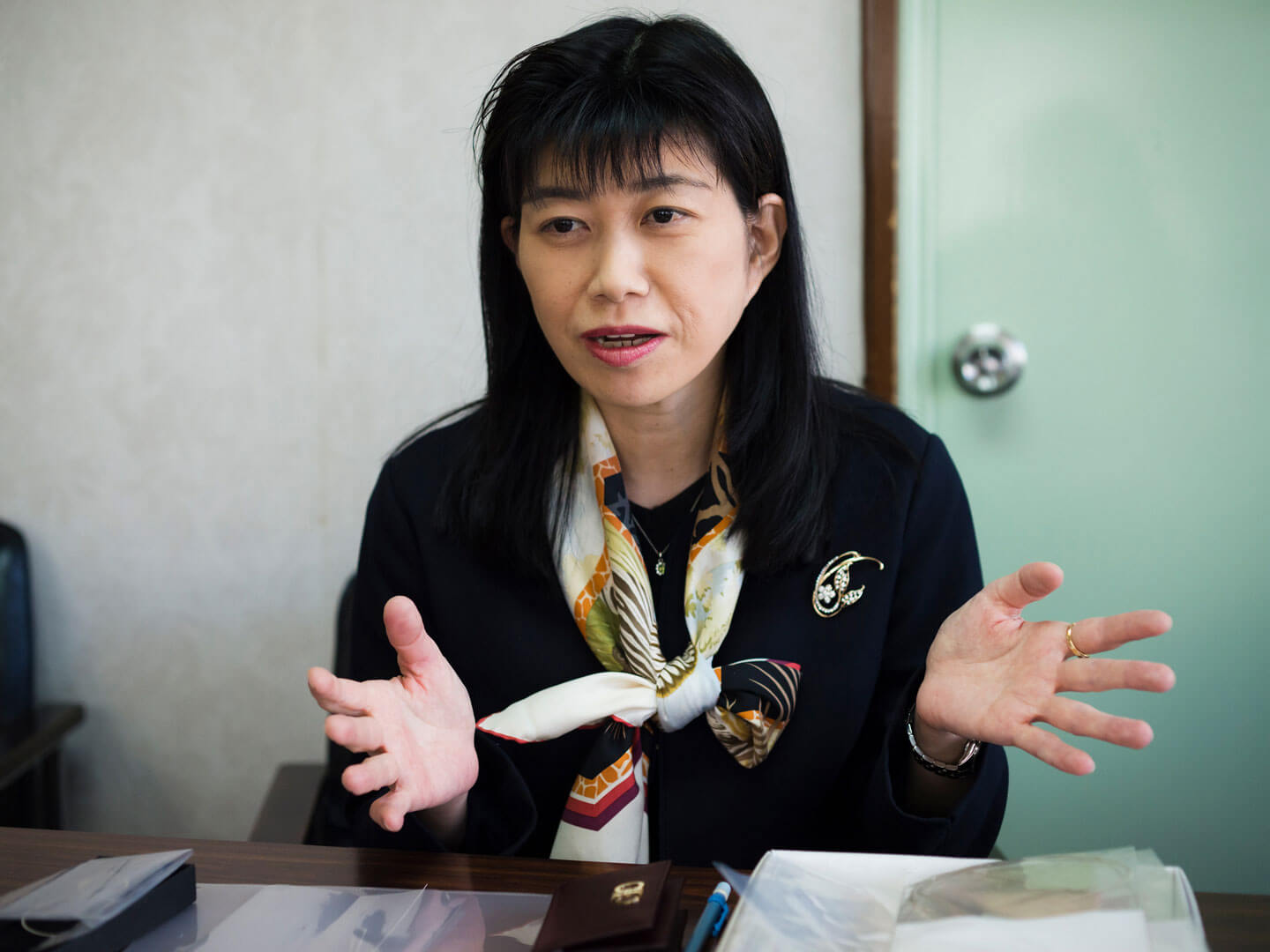
You’re saying it’s worth pursuing higher levels of artisanship domestically.
Komatsu: What I mean is that continuing to do this in Japan, with so many workers and so many machines, will certainly be difficult. We have to continue challenging ourselves with the production of springs with complex shapes and difficult patterns, and it’s very important to us to keep finding new customers. The products that customers want are continuously evolving. It can be quite a task to continue improving technical skills while trying to keep afloat.
It is said that “manufacturing in Japan is supported by small factories,” however…
Everyone at the factory seems to be saying that continuing manufacture in Japan will be difficult.
Komatsu: You do often hear that “manufacturing in Japan is supported by small factories” and I am very grateful for that. However, if we don’t continue to receive orders and make products, we will lose our competitive edge. In this world of rapid market expansion overseas, we can feel the gap between reality and perception.
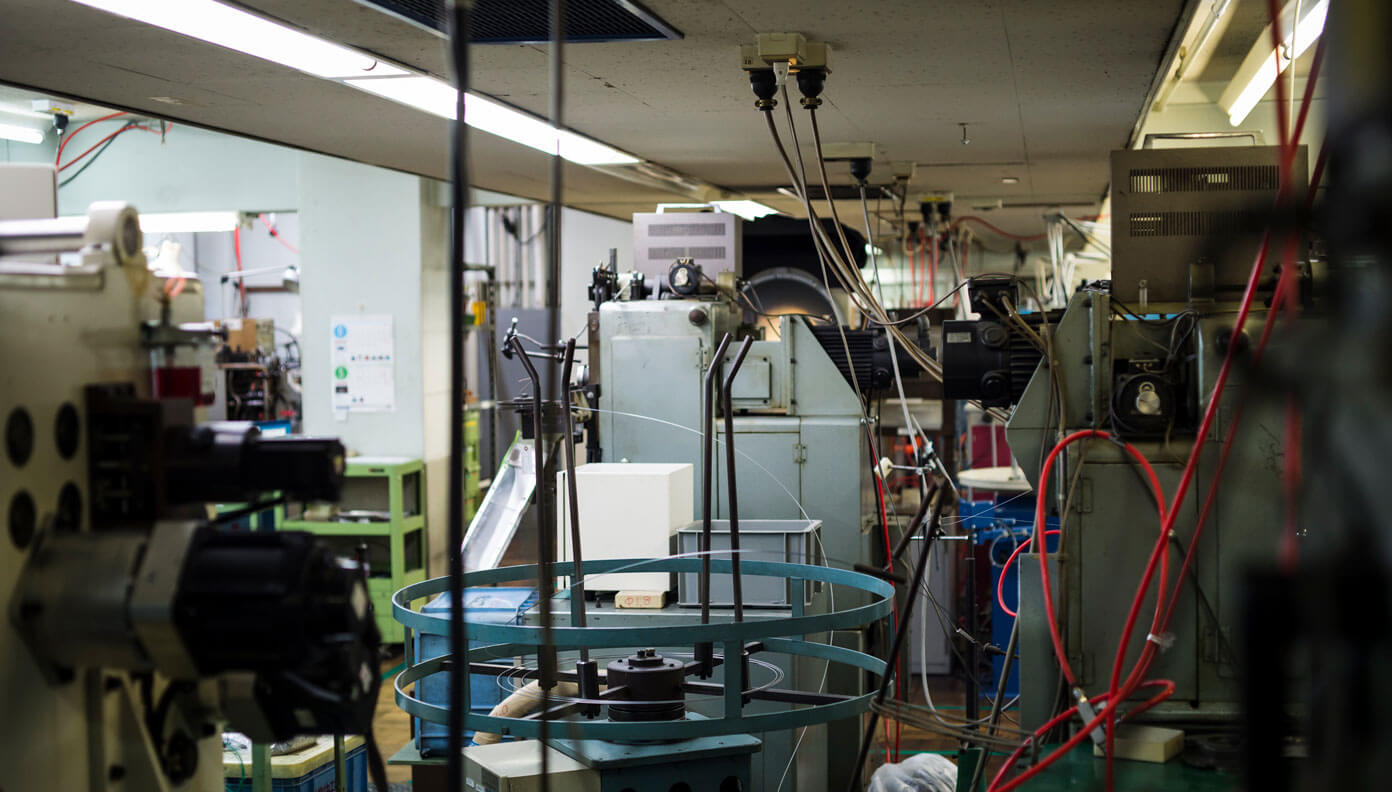
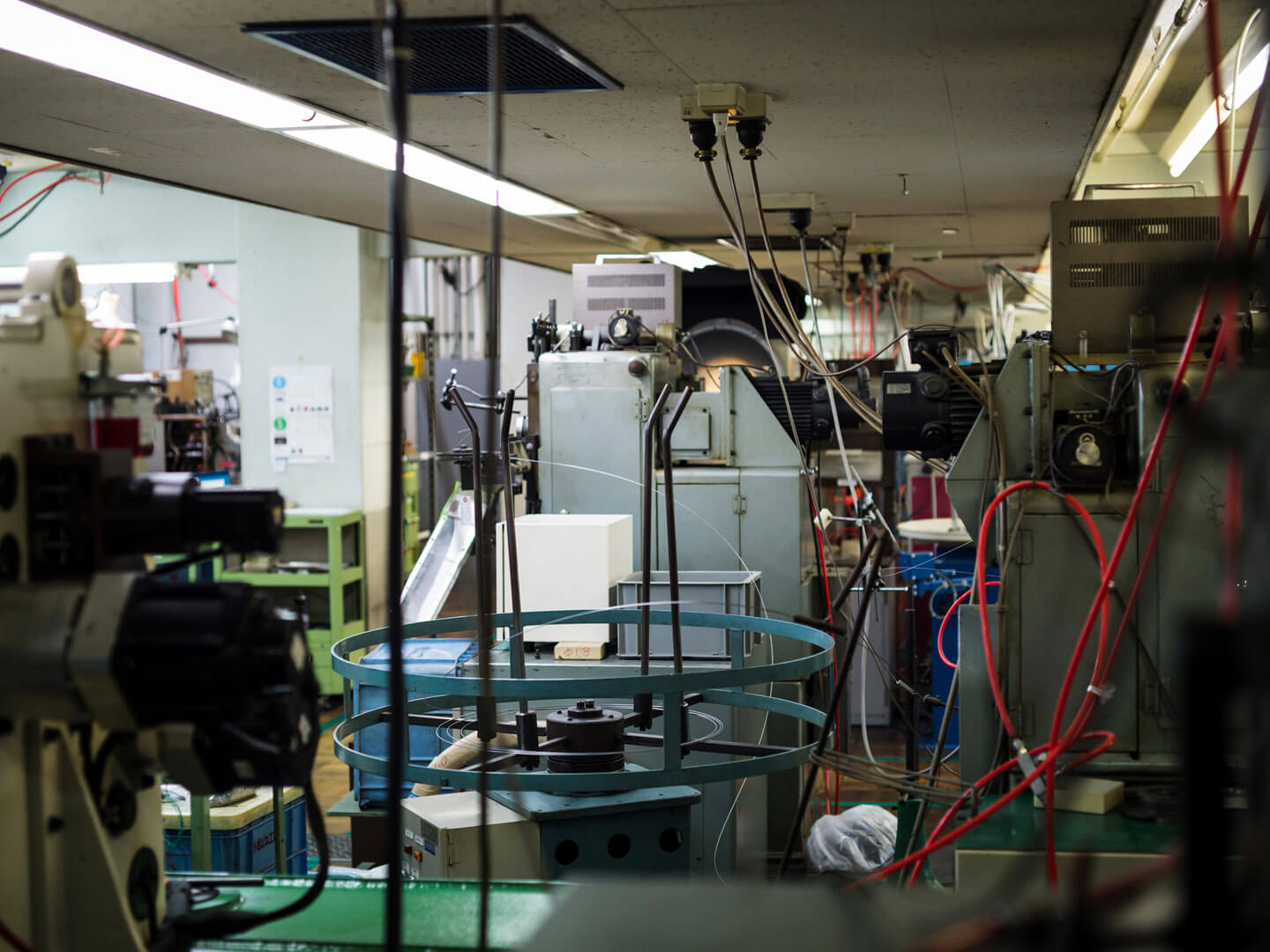
That means it must be important for the manufacturing industry in Japan that there is a shared understanding of the tasks ahead, right?
Komatsu: That’s right. The country is taking various measures in order to make sure the smaller companies that possess this high level of technology remain in Japan. These companies must continue to work hard and focus on foreign markets. However, because things like finding customers, terms and conditions, products, and the movement of money are all different from the domestic market, this process may not be that easy. If we continue as we have up until now, we won’t succeed. Therefore, my role as a manager is to help keep everybody motivated so we can face these difficult challenges.
For example, what kind of challenges?
Komatsu: Technical challenges such as making use of new materials, new structures, making products of a high standard. If a new request comes from a customer, we need to challenge ourselves.
The medical equipment you’ve been working on is one such example.
Exactly. Product used in medical equipment are quite technically difficult to make. Another challenge is the international market. We are continuing to try and learn how to do business abroad and see how far our companies spring technology can go.
FACTORY
komatsu spring idstr.
Komatsu Spring Industrial Co., Ltd.
Komatsu Spring was founded in 1941, and has three manufacturing centers: in Tokyo’s Ota Ward, Miyagi Prefecture’s Ogawara, and Akita Prefecture’s Ota as well as a new company branch in Indonesia. The company specializes in “precision springs,” for use in electric, optical, medical, and communications devices, as well as the auto and jewelry fields. In particular, they manufacture helical compression springs, extension coil springs, torsion springs, and filigrees. They handle everything from prototypes to mass-production.
5-3-18 Omoriminami, Ota-ku, Tokyo 143-0013 Japan
